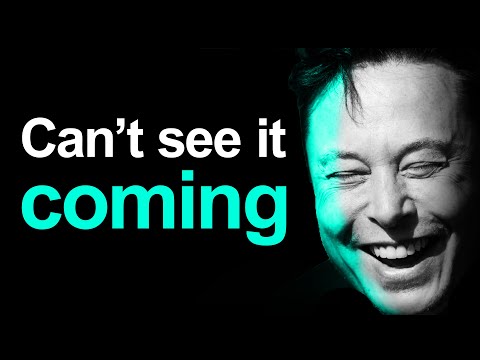Uber's CEO is underestimating Tesla's advancements in autonomous vehicle technology, particularly their vision-only approach, while grappling with the challenges of safety and cost-effectiveness in the competitive landscape
Questions to inspire discussion
Vision-Only Approach
🚗 Q: How does Tesla's vision-only approach compare to sensor-based systems?
A: Tesla's vision-only approach is considered superior to sensor-based systems like Waymo's, offering a smoother, more human-like driving experience and operating cost-effectively at scale.
👁️ Q: What advantages does the vision-only system have over human drivers?
A: Tesla's system can observe 360° and react faster than humans, potentially achieving multiple times better safety without additional sensors like LIDAR or radar.
Robotaxi Operations
🚕 Q: Where is Tesla currently operating robotaxis?
A: Tesla is already operating robotaxis with paying customers in Austin, demonstrating the real-world viability of their autonomous driving technology.
🛡️ Q: What is Tesla's safety record for their robotaxi service?
A: Tesla has reported zero safety incidents in their Austin robotaxi operations, supporting claims of the system's reliability and superiority.
Technological Advantages
📊 Q: How does Tesla's approach address sensor data integration challenges?
A: By using vision-only, Tesla avoids issues of noise and conflicting information from multiple sensors that can pollute the signal and create safety system problems.
💰 Q: Why is Tesla's approach considered more financially sustainable?
A: Tesla's vision-only system is more cost-effective and scalable than sensor-heavy alternatives, allowing it to compete financially in the long term.
Key Insights
Tesla's Autonomous Driving Approach
🚗 Tesla's vision-only approach to autonomy is claimed to be superior to multi-sensor systems used by competitors.
🔍 The use of multiple sensors like LIDAR, radar, and sonar allegedly pollutes the signal and creates noise in the data.
🛑 According to the video, multi-sensor systems potentially make vehicles less safe due to data conflicts.
Uber's Perspective on Robotaxis
🚕 Uber's CEO appears to be in denial about the potential disruption caused by Tesla's robotaxi service.
💼 The video suggests Uber's business model could be significantly impacted by the widespread adoption of autonomous taxis.
🔮 There's an implication that Uber may need to adapt its strategy to remain competitive in a future dominated by self-driving vehicles.
#Robotaxi #Tesla #Uber
XMentions: @Tesla @HabitatsDigital @Uber @StephenMarkRyan @dkhos
Clips
-
00:00 🚗 Uber's CEO is in denial about Tesla's threat from autonomous vehicles, focusing on safety while struggling to compete with their cost-effectiveness.
- Uber's CEO is in a difficult position, aware that Tesla's success in autonomous vehicles could threaten Uber's business, yet unable to openly acknowledge this reality.
- Uber faces challenges competing with Tesla's cost-effective autonomous vehicles and emphasizes the need for superhuman safety in autonomous technology.
-
01:38 🚗 Autonomous vehicles must be significantly safer than humans to gain public trust, despite the high rate of human error in driving-related fatalities.
-
02:43 🤖 Vision-only technology for autonomous vehicles may surpass human capabilities, but critics argue additional sensors are necessary for safety.
-
03:59 🚗 Tesla's vision-only strategy for full autonomy presents a tough challenge for competitors, though future tech like LIDAR may enhance safety.
- Tesla's unique approach to achieving full autonomy through vision alone poses a significant challenge for competitors relying on less scalable and cost-effective technologies.
- In the near term, achieving superhuman safety with a camera-only product is challenging, but future advancements may make it possible, especially with the integration of LIDAR technology.
-
05:39 🚗 Tesla's removal of LAR sensors underscores the risks of excessive technology in autonomous vehicles, while the path to superhuman safety remains unclear.
- Tesla's decision to disable LAR sensors highlights that more sensors can lead to conflicting information and decreased vehicle safety, a realization that other companies have yet to adopt.
- Achieving superhuman safety in autonomous vehicles is possible, but the effectiveness of current technology and expert opinions remains uncertain.
-
07:25 🚗 Tesla's successful robotaxis in Austin showcase their superior vision-only technology, unlike competitors struggling with safe autonomy.
- Other companies are failing to achieve safe autonomy like Tesla, which is already operating successful robotaxis in Austin without incidents, highlighting their superior technology and product.
- Tesla omits LIDAR and radar from its vehicles not due to cost, but to avoid signal noise, demonstrating that vision-only systems can be superior.
-
08:57 🚗 Uber's CEO faces criticism for his unrealistic optimism about partnerships and underestimating Tesla's progress in autonomous vehicles.
- Commenters criticize Uber's CEO for promoting partnerships and opinions on autonomous vehicles while highlighting the limitations of current technology.
- The Uber CEO is overly optimistic about his company's prospects while underestimating Tesla's advancements in autonomous technology.
-------------------------------------
Duration: 0:10:53
Publication Date: 2025-08-25T13:30:59Z
WatchUrl: https://www.youtube.com/watch?v=Ug46cXf8bYM
-------------------------------------

